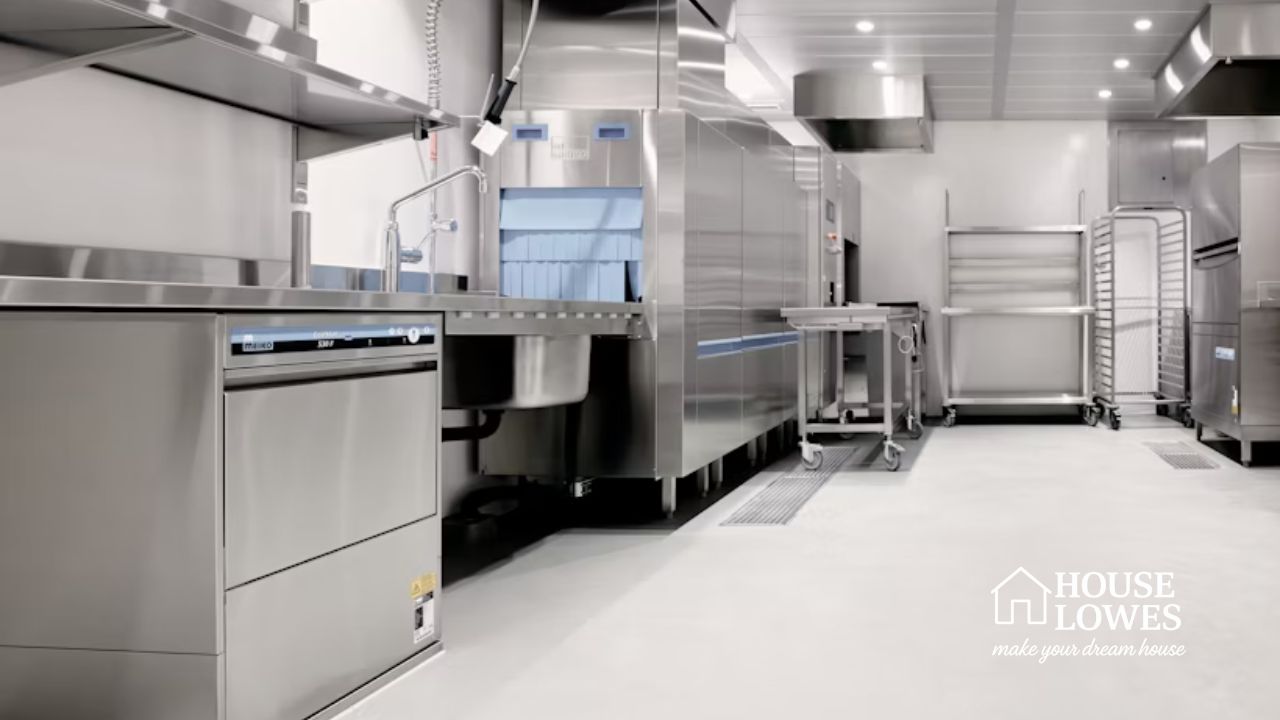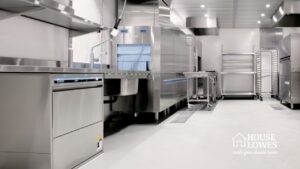A well-designed commercial kitchen isn’t just about aesthetics or brand image—it’s a machine built for precision, safety, and efficiency. Every piece of equipment, from the stovetop to the prep table, plays a role in how smoothly a restaurant runs. The secret to maintaining that balance lies in selecting materials and equipment that can handle high-volume cooking, constant cleaning, and strict hygiene standards without compromising performance.
Building a Kitchen That Works as Hard as You Do
Professional kitchens operate under pressure. Chefs move fast, dishes pile up, and equipment endures intense daily use. This means every choice—from benchtops to cookware—needs to balance practicality with resilience. Stainless steel has long been the material of choice in commercial kitchens, not for its looks alone, but for its ability to withstand heat, moisture, and rigorous cleaning cycles. It resists corrosion and doesn’t absorb flavours or bacteria, which keeps the workspace hygienic and compliant with food safety standards.
It’s also flexible—available in various grades and thicknesses, suitable for everything from splashbacks to heavy-duty benches. The best kitchens are designed around workflow, and stainless steel’s adaptability makes it ideal for creating seamless, custom-fitted work areas.
The Essentials: Equipment That Defines a Professional Kitchen
Commercial kitchens require a mix of specialised and general-purpose tools. The must-haves typically fall into a few key categories:
- Cooking Equipment: Ovens, fryers, grills, and ranges form the backbone of the operation. Choosing energy-efficient models can significantly reduce long-term costs.
- Refrigeration and Storage: Cold rooms, under-bench fridges, and upright freezers are essential for preserving ingredients safely.
- Preparation Surfaces: Stainless steel prep tables are not only easy to sanitise but can be fitted with shelving or splashbacks to maximise space.
- Dishwashing Stations: Commercial dishwashers must handle heavy loads quickly without sacrificing hygiene.
- Ventilation and Safety Systems: Proper airflow is critical for maintaining temperature, removing grease, and protecting staff from heat and fumes.
Each piece should be chosen with workflow in mind—ingredients move from storage to prep to cooking to plating. Equipment layout that supports this natural sequence can reduce clutter, improve speed, and make training new staff easier.
Why Stainless Steel Remains the Gold Standard
There’s a reason you’ll find stainless steel everywhere in restaurants—from countertops to sinks and exhaust hoods. It doesn’t rust, crack, or warp easily, even when exposed to boiling water or acidic ingredients. Its non-porous surface prevents bacteria buildup, and it cleans up effortlessly with standard disinfectants.
Stainless steel also offers long-term value. While the upfront cost can be higher than alternatives, its longevity often makes it the more economical choice. It’s resistant to dents and scratches, and even after years of use, it maintains a clean, professional appearance that reinforces your restaurant’s commitment to hygiene and quality.
Many kitchen designers and builders start their planning around the metal’s versatility. For example, a single sheet of stainless steel can be fabricated into multiple components—benchtops, shelves, wall panels, or splashbacks—allowing for seamless design continuity and easy maintenance.
Customising Equipment for Function and Space
No two kitchens are identical. The needs of a bakery differ from those of a seafood restaurant or catering business. Custom fabrication allows owners to design benches, cabinets, and storage systems tailored to their menu and workflow.
Custom solutions can make even small kitchens more efficient. Integrated sinks, under-counter storage, or mobile prep stations help optimise limited floor space. Additionally, stainless steel’s reflective surface enhances lighting, making work areas feel brighter and cleaner—a subtle yet impactful advantage during long shifts.
Maintaining Hygiene and Longevity
Cleanliness isn’t negotiable in hospitality. Equipment must not only perform well but also be easy to clean and maintain. Regular deep cleaning of stoves, fryers, and hoods prevents grease buildup, while wiping down benches and appliances with non-abrasive cleaners keeps them looking new.
For stainless steel specifically, using soft cloths and avoiding harsh chemicals extends its lifespan. Even minor scratches can be buffed out, restoring the surface’s natural shine. By scheduling routine maintenance and inspections, restaurants can prevent costly repairs and keep their operations running smoothly.
Balancing Quality with Cost
While it’s tempting to cut costs with cheaper alternatives, low-quality equipment often leads to higher expenses in the long run. Frequent replacements, downtime from breakdowns, and lower energy efficiency can quickly outweigh the initial savings. Investing in durable, energy-efficient appliances and robust materials pays off through reduced operational costs and improved consistency in food preparation.
Designing for Efficiency and Safety
Beyond materials and equipment, layout is everything. A thoughtful kitchen design minimises unnecessary movement, reduces risk of accidents, and enhances collaboration between staff. Rounded edges, non-slip flooring, and properly spaced walkways make the environment safer and more comfortable. Stainless steel’s reflective finish also helps enhance visibility, reducing shadowed corners where accidents might occur.
Conclusion: Building Kitchens That Last
A restaurant kitchen is an ecosystem—every surface, appliance, and material needs to support both function and safety. Stainless steel, with its combination of strength, cleanliness, and adaptability, remains the cornerstone of professional kitchen design.
By investing in durable equipment and thoughtful layouts, restaurant owners create spaces that run efficiently, stay compliant with health regulations, and withstand years of demanding service. Whether it’s a busy café or a large-scale commercial kitchen, the right equipment and materials make all the difference between a setup that struggles and one that thrives.
Admin Recommendation
Durable & Stylish Bronze Metal Roof – Your Complete Guide







